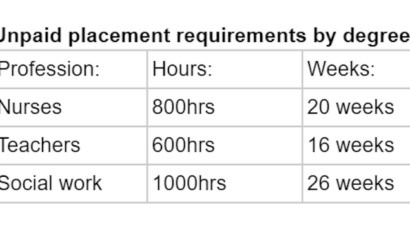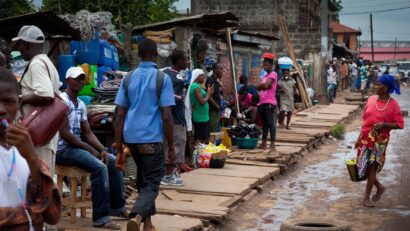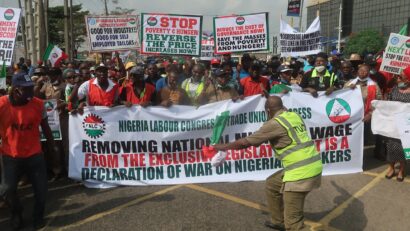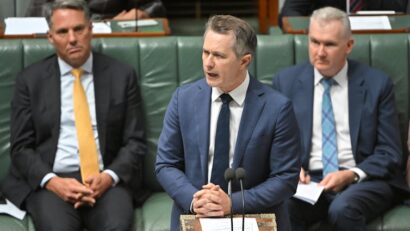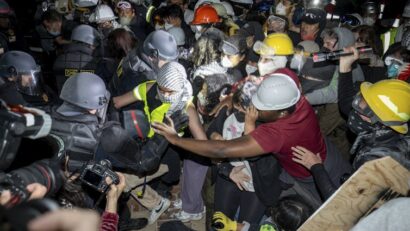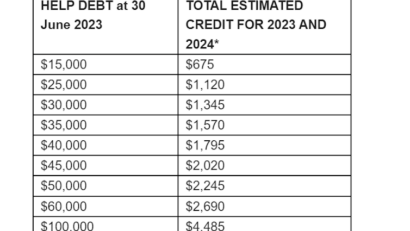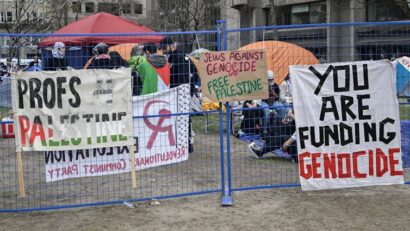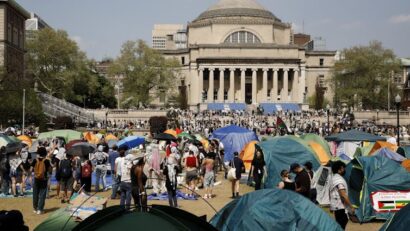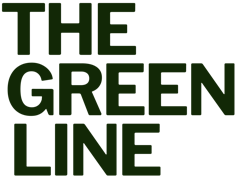
Fractured futures: Upward mobility for immigrants is a myth as their health declines
Immigrant health research frequently refers to the notion that immigrants are generally healthier than people born in Canada but that their health worsens with time.
The apparent trend has been attributed to a number of factors, including an unexpected lack of social mobility after immigration.
Toronto news outlet The Green Line and The Conversation Canada collaborated on this article, part of The Green Line’s ongoing Diasporic Conversations series. For more information about The Green Line, scroll to the end of this article.
The story often goes that immigrant parents willingly make sacrifices for the good of their children, with the widespread assumption that emphasizing good grades and higher education among the next generation will make their sacrifices worth it.
But recent research finds that this lack of social mobility extends into the second generation.
As someone who’s spent more than a decade conducting immigrant and refugee health research, I am among a growing contingent of researchers who recognize that immigrants in Canada have extremely diverse identities and experiences, all of which affect their experiences with the structural and social determinants of health.
That, in turn, shapes their health and health-care access, and challenges the notion that immigrants are a monolith with identical health and social trajectories.
This “healthy immigrant effect” and the upward social mobility of subsequent generations are commonly believed theories in academic circles. However, I fear these ideas have caused the nuanced needs of immigrant and diasporic communities to be over-simplified, dismissed and even neglected by policymakers.
The impact of COVID-19
The legacy of this neglect became painfully clear in the early days of the COVID-19 pandemic amid a litany of reports about how long-term care workers, taxi drivers, food processors and other essential workers who came to Canada as immigrants were falling victim to the virus.
Read more:
Data linking race and health predicts new COVID-19 hotspots
Statistics have since backed up these reports.
Toronto Public Health, the first health unit in Canada to collect race-based data during the pandemic, found racialized Torontonians (including mostly immigrants but also those in racialized diasporic communities) were much more likely to be infected or hospitalized due to COVID-19.
An upcoming study has found that before high-population COVID-19 vaccine coverage was achieved, immigrants in Ontario — particularly those from Central America, Jamaica, parts of South Asia and East Africa — were much more likely to be hospitalized or die from COVID-19 than other residents in the province.
The major contributing factors are a mismatch between their education and the jobs they end up getting, and employer discrimination, which leads to immigrants being over-represented and trapped in essential, low-wage precarious work. These jobs have a higher risk of exposure to COVID-19, and don’t provide employer-paid sick leave.
Thankfully, an Ontario government focus on equitable vaccine distribution, as well as innovative strategies like Toronto’s Community Health Ambassadors program — implemented by immigrant-serving community organizations — led to a remarkably equitable vaccine rollout and equally remarkable reductions in hospitalizations and deaths, according to the upcoming study.
Intake workers assist visitors at an immigrant and refugee vaccine clinic set up by Global Medic in Toronto in April 2021.
THE CANADIAN PRESS/Frank Gunn
But considering the subsequent elimination of many of these programs and policies, all of which were put in place to address barriers to vaccination for immigrants and their higher exposure to COVID-19 (due, in part, to the absence of employer-paid sick days), it’s possible that once again immigrants are bearing the brunt of the virus that’s still circulating and mutating.
Policy neglect is also responsible for the current primary-care crisis across Canada, with pre-pandemic inequities becoming further entrenched by the COVID-19 pandemic.
Racialized and low-income Canadians are the least likely to report having a primary-care physician. Meanwhile family doctors nearing retirement have a larger number of patients who face multiple social barriers to health and health care access. Both affected groups are likely made up largely of immigrant and diasporic communities.
The importance of elections
So how can the health and well-being of immigrants — widely praised as being the engine of Canada’s economy — and subsequent generations be prioritized?
First, our elected officials should engage meaningfully and respectfully with immigrants from all walks and stages of life, and avoid stoking xenophobic sentiments among the public.
Second, immigrants with Canadian citizenship — particularly those who’ve been in Canada for fewer than 10 years — are less likely than Canadian-born residents to vote in federal elections. There must be civic engagement initiatives connecting immigrants’ priorities with specific political platforms coupled with “get out the vote” campaigns.
Immigrants who are not yet citizens can’t vote in elections at any level of government, so they have no influence over how their tax dollars are spent. That voter gap should be addressed immediately, particularly given the large numbers of permanent and temporary residents who have made Toronto and other Canadian cities their home in recent years.
Two women walk past B.C. Green Party Leader Sonia Furstenau as she poses with a candidate after announcing her party’s election platform in New Westminster, B.C., in October 2020.
THE CANADIAN PRESS/Jonathan Hayward
Right now, it seems these groups of potential future citizens are good enough to fill labour gaps and contribute their time, money and tax dollars to the economy. But they’re not good enough to have their voices and needs recognized in the political decision-making that governs their everyday lives and futures.
The false notion of the healthy immigrant effect and assumption of upward social mobility among the second generation has been reinforced through a lack of recognition of the diversity of identities and experiences of immigrants in big cities like Toronto and beyond.
These assumptions may have led policymakers to neglect the health and health-care needs of immigrants.
Addressing long-standing inequities in immigrant and migrant voter participation in Canada may finally help shine a spotlight on the social and economic hardships that immigrant and diasporic communities have faced for decades, not to mention the adverse impact on their health and health-care access.
The Green Line is an award-winning, hyperlocal news outlet that investigates the way Torontonians live to help young and other underserved citizens survive and thrive in a rapidly changing city. Its ongoing series, Diasporic Conversations, is exploring why people living in a uniquely multicultural and pluralistic city like Toronto feel the impact of geopolitical conflicts much more intensely than those in other cities. Läs mer…
